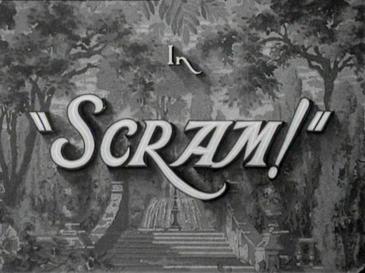Last week I published Guix on Debian container images that prepared for today’s announcement of Guix on Trisquel/Ubuntu container images.
I have published images with reasonably modern Guix for Trisquel 11 aramo, Trisquel 12 ecne, Ubuntu 22.04 and Ubuntu 24.04. The Ubuntu images are available for both amd64 and arm64, but unfortunately Trisquel arm64 containers aren’t available yet so they are only for amd64. Images for ppc64el and riscv64 are work in progress. The currently supported container names:
registry.gitlab.com/debdistutils/guix/guix-on-dpkg:trisquel11-guix
registry.gitlab.com/debdistutils/guix/guix-on-dpkg:trisquel12-guix
registry.gitlab.com/debdistutils/guix/guix-on-dpkg:ubuntu22.04-guix
registry.gitlab.com/debdistutils/guix/guix-on-dpkg:ubuntu24.04-guixOr you prefer guix-on-dpkg on Docker Hub:
docker.io/jas4711/guix-on-dpkg:trisquel11-guix
docker.io/jas4711/guix-on-dpkg:trisquel12-guix
docker.io/jas4711/guix-on-dpkg:ubuntu22.04-guix
docker.io/jas4711/guix-on-dpkg:ubuntu24.04-guixYou may use them as follows. See the guix-on-dpkg README for how to start guix-daemon and installing packages.
jas@kaka:~$ podman run -it --hostname guix --rm registry.gitlab.com/debdistutils/guix/guix-on-dpkg:trisquel11-guix
root@guix:/# head -1 /etc/os-release
NAME="Trisquel GNU/Linux"
root@guix:/# guix describe
guix 136fc8b
repository URL: https://gitlab.com/debdistutils/guix/mirror.git
branch: master
commit: 136fc8bfe91a64d28b6c54cf8f5930ffe787c16e
root@guix:/# You may now be asking yourself: why? Fear not, gentle reader, because having two container images of roughly similar software is a great tool for attempting to build software artifacts reproducible, and comparing the result to spot differences. Obviously.
I have been using this pattern to get reproducible tarball artifacts of several software releases for around a year and half, since libntlm 1.8.
Let’s walk through how to setup a CI/CD pipeline that will build a piece of software, in four different jobs for Trisquel 11/12 and Ubuntu 22.04/24.04. I am in the process of learning Codeberg/Forgejo CI/CD, so I am still using GitLab CI/CD here, but the concepts should be the same regardless of platform. Let’s start by defining a job skeleton:
.guile-gnutls: &guile-gnutls
before_script:
- /root/.config/guix/current/bin/guix-daemon --version
- env LC_ALL=C.UTF-8 /root/.config/guix/current/bin/guix-daemon --build-users-group=guixbuild $GUIX_DAEMON_ARGS &
- GUIX_PROFILE=/root/.config/guix/current; . "$GUIX_PROFILE/etc/profile"
- type guix
- guix --version
- guix describe
- time guix install --verbosity=0 wget gcc-toolchain autoconf automake libtool gnutls guile pkg-config
- time apt-get update
- time apt-get install -y make git texinfo
- GUIX_PROFILE="/root/.guix-profile"; . "$GUIX_PROFILE/etc/profile"
script:
- git clone https://codeberg.org/guile-gnutls/guile-gnutls.git
- cd guile-gnutls
- git checkout v5.0.1
- ./bootstrap
- ./configure
- make V=1
- make V=1 check VERBOSE=t
- make V=1 dist
after_script:
- mkdir -pv out/$CI_JOB_NAME_SLUG/src
- mv -v guile-gnutls/*-src.tar.* out/$CI_JOB_NAME_SLUG/src/
- mv -v guile-gnutls/*.tar.* out/$CI_JOB_NAME_SLUG/
artifacts:
paths:
- out/**This installs some packages, clones guile-gnutls (it could be any project, that’s just an example), build it and return tarball artifacts. The artifacts are the git-archive and make dist tarballs.
Let’s instantiate the skeleton into four jobs, running the Trisquel 11/12 jobs on amd64 and the Ubuntu 22.04/24.04 jobs on arm64 for fun.
guile-gnutls-trisquel11-amd64:
tags: [ saas-linux-medium-amd64 ]
image: registry.gitlab.com/debdistutils/guix/guix-on-dpkg:trisquel11-guix
extends: .guile-gnutls
guile-gnutls-ubuntu22.04-arm64:
tags: [ saas-linux-medium-arm64 ]
image: registry.gitlab.com/debdistutils/guix/guix-on-dpkg:ubuntu22.04-guix
extends: .guile-gnutls
guile-gnutls-trisquel12-amd64:
tags: [ saas-linux-medium-amd64 ]
image: registry.gitlab.com/debdistutils/guix/guix-on-dpkg:trisquel12-guix
extends: .guile-gnutls
guile-gnutls-ubuntu24.04-arm64:
tags: [ saas-linux-medium-arm64 ]
image: registry.gitlab.com/debdistutils/guix/guix-on-dpkg:ubuntu24.04-guix
extends: .guile-gnutlsRunning this pipeline will result in artifacts that you want to confirm for reproducibility. Let’s add a pipeline job to do the comparison:
guile-gnutls-compare:
image: alpine:latest
needs: [ guile-gnutls-trisquel11-amd64,
guile-gnutls-trisquel12-amd64,
guile-gnutls-ubuntu22.04-arm64,
guile-gnutls-ubuntu24.04-arm64 ]
script:
- cd out
- sha256sum */*.tar.* */*/*.tar.* | sort | grep -- -src.tar.
- sha256sum */*.tar.* */*/*.tar.* | sort | grep -v -- -src.tar.
- sha256sum */*.tar.* */*/*.tar.* | sort | uniq -c -w64 | sort -rn
- sha256sum */*.tar.* */*/*.tar.* | grep -- -src.tar. | sort | uniq -c -w64 | grep -v '^ 1 '
- sha256sum */*.tar.* */*/*.tar.* | grep -v -- -src.tar. | sort | uniq -c -w64 | grep -v '^ 1 '
# Confirm modern git-archive tarball reproducibility
- cmp guile-gnutls-trisquel12-amd64/src/*.tar.gz guile-gnutls-ubuntu24-04-arm64/src/*.tar.gz
# Confirm old git-archive (export-subst but long git describe) tarball reproducibility
- cmp guile-gnutls-trisquel11-amd64/src/*.tar.gz guile-gnutls-ubuntu22-04-arm64/src/*.tar.gz
# Confirm 'make dist' generated tarball reproducibility
- cmp guile-gnutls-trisquel11-amd64/*.tar.gz guile-gnutls-ubuntu22-04-arm64/*.tar.gz
- cmp guile-gnutls-trisquel12-amd64/*.tar.gz guile-gnutls-ubuntu24-04-arm64/*.tar.gz
artifacts:
when: always
paths:
- ./out/**Look how beautiful, almost like ASCII art! The commands print SHA256 checksums of the artifacts, sorted in a couple of ways, and then proceeds to compare relevant artifacts. What would the output of such a run be, you may wonder? You can look for yourself in the guix-on-dpkg pipeline but here is the gist of it:
$ cd out
$ sha256sum */*.tar.* */*/*.tar.* | sort | grep -- -src.tar.
79bc24143ba083819b36822eacb8f9e15a15a543e1257c53d30204e9ffec7aca guile-gnutls-trisquel11-amd64/src/guile-gnutls-v5.0.1-src.tar.gz
79bc24143ba083819b36822eacb8f9e15a15a543e1257c53d30204e9ffec7aca guile-gnutls-ubuntu22-04-arm64/src/guile-gnutls-v5.0.1-src.tar.gz
b190047cee068f6b22a5e8d49ca49a2425ad4593901b9ac8940f8842ba7f164f guile-gnutls-trisquel12-amd64/src/guile-gnutls-v5.0.1-src.tar.gz
b190047cee068f6b22a5e8d49ca49a2425ad4593901b9ac8940f8842ba7f164f guile-gnutls-ubuntu24-04-arm64/src/guile-gnutls-v5.0.1-src.tar.gz
$ sha256sum */*.tar.* */*/*.tar.* | sort | grep -v -- -src.tar.
1e8d107ad534b85f30e432d5c98bf599aab5d8db5f996c2530aabe91f203018a guile-gnutls-trisquel11-amd64/guile-gnutls-5.0.1.tar.gz
1e8d107ad534b85f30e432d5c98bf599aab5d8db5f996c2530aabe91f203018a guile-gnutls-ubuntu22-04-arm64/guile-gnutls-5.0.1.tar.gz
bc2df2d868f141bca5f3625aa146aa0f24871f6dcf0b48ff497eba3bb5219b84 guile-gnutls-trisquel12-amd64/guile-gnutls-5.0.1.tar.gz
bc2df2d868f141bca5f3625aa146aa0f24871f6dcf0b48ff497eba3bb5219b84 guile-gnutls-ubuntu24-04-arm64/guile-gnutls-5.0.1.tar.gz
$ sha256sum */*.tar.* */*/*.tar.* | sort | uniq -c -w64 | sort -rn
2 bc2df2d868f141bca5f3625aa146aa0f24871f6dcf0b48ff497eba3bb5219b84 guile-gnutls-trisquel12-amd64/guile-gnutls-5.0.1.tar.gz
2 b190047cee068f6b22a5e8d49ca49a2425ad4593901b9ac8940f8842ba7f164f guile-gnutls-trisquel12-amd64/src/guile-gnutls-v5.0.1-src.tar.gz
2 79bc24143ba083819b36822eacb8f9e15a15a543e1257c53d30204e9ffec7aca guile-gnutls-trisquel11-amd64/src/guile-gnutls-v5.0.1-src.tar.gz
2 1e8d107ad534b85f30e432d5c98bf599aab5d8db5f996c2530aabe91f203018a guile-gnutls-trisquel11-amd64/guile-gnutls-5.0.1.tar.gz
$ sha256sum */*.tar.* */*/*.tar.* | grep -- -src.tar. | sort | uniq -c -w64 | grep -v '^ 1 '
2 79bc24143ba083819b36822eacb8f9e15a15a543e1257c53d30204e9ffec7aca guile-gnutls-trisquel11-amd64/src/guile-gnutls-v5.0.1-src.tar.gz
2 b190047cee068f6b22a5e8d49ca49a2425ad4593901b9ac8940f8842ba7f164f guile-gnutls-trisquel12-amd64/src/guile-gnutls-v5.0.1-src.tar.gz
$ sha256sum */*.tar.* */*/*.tar.* | grep -v -- -src.tar. | sort | uniq -c -w64 | grep -v '^ 1 '
2 1e8d107ad534b85f30e432d5c98bf599aab5d8db5f996c2530aabe91f203018a guile-gnutls-trisquel11-amd64/guile-gnutls-5.0.1.tar.gz
2 bc2df2d868f141bca5f3625aa146aa0f24871f6dcf0b48ff497eba3bb5219b84 guile-gnutls-trisquel12-amd64/guile-gnutls-5.0.1.tar.gz
$ cmp guile-gnutls-trisquel12-amd64/src/*.tar.gz guile-gnutls-ubuntu24-04-arm64/src/*.tar.gz
$ cmp guile-gnutls-trisquel11-amd64/src/*.tar.gz guile-gnutls-ubuntu22-04-arm64/src/*.tar.gz
$ cmp guile-gnutls-trisquel11-amd64/*.tar.gz guile-gnutls-ubuntu22-04-arm64/*.tar.gz
$ cmp guile-gnutls-trisquel12-amd64/*.tar.gz guile-gnutls-ubuntu24-04-arm64/*.tar.gzThat’s it for today, but stay tuned for more updates on using Guix in containers, and remember; Happy Hacking!

